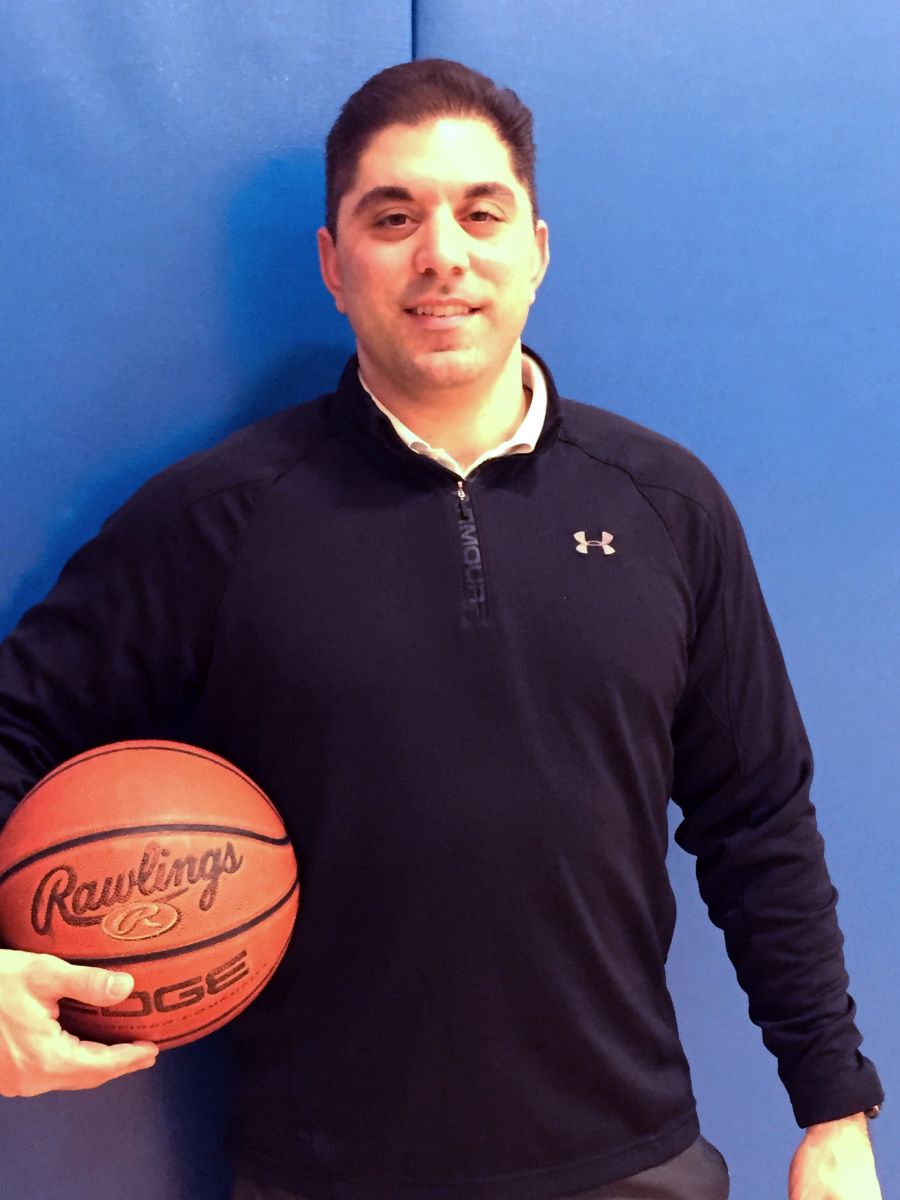
There is new meaning to the basketball phrase “full court press.” For teacher and coach Aaron Fiorini, it was the press of the Automated External Defibrillator he used to save the life of a man with whom he was playing basketball.
Coach Fiorini was playing a pick-up game in January with some over-30 guys from the Camden community at the high school when one of the players took himself out of the game and sat on the sidelines.
“He kind of went over. He looked like he had a seizure. He was out of it. He was having convulsions,” Fiorini said. Fellow players Miles Robertson, a state trooper, and Rick Leos, a volunteer girls basketball coach, ran to his aid.
As the stricken player slumped over, he bumped his head, so Fiorini ran and grabbed some ice from an ice machine outside the gym.
Quickly, though, the situation turned grave.
“They (fellow players) yelled that he had no pulse and wasn’t breathing. They immediately started CPR and compressions. I went back and got the AED.”
It, too, was right outside in the hallway, hanging on a wall.
“I grabbed the defibrillator and immediately hooked it up to him. It read that he needed a shock. He had no pulse. So I shocked him,” Fiorini said.
The player’s life was saved. “It was a group effort,” said the coach, who is a member of the Camden Teacher Association led by Ben Mitchell.
Later, Fiorini reports, “The doctor told him if it weren’t for the AED, he wouldn’t be here. He would’ve died.”
Since 2002, New York state law requires an AED in each instructional school facility — a law that was strongly advocated for by NYSUT.
Camden, Fiorini reports, has them “all over;” far more than the minimum requirements.
“We have them in the hallways and our sports teams take one to away games. We’re very fortunate our district takes care of us and makes sure we have necessary tools,” said Fiorini, who has been a physical education here since 2003. “”In our high school alone, we have 10 or 11.”
It is this same high school where the spring musical being staged this year is “Mary Poppins.” And in this same school, students can create individual workout programs in the fitness center, building muscle and strength on the treadmill, elliptical, nautilus, stepper or squat racks. Before school begins in the morning, or after 6 p.m. when the sports teams are done working out for the day, community members can use the fitness center for free, Fiorini said.
Camden is rural Oneida County and its population is around 5,000 people. The thermometer in winter hovers around an average low of 9 or 10 degrees.
Fiorini trains fellow coaches on how to use the AED although, before this life-changing moment in the gym, he said: “I never had to use it on somebody who didn’t have a pulse.”
A resident of Camden, he was born in nearby Rome.
“I grew up my whole life playing sports. I had some great coaches who led me to want to take that path, so I went to Ithaca College where I played football and received two degrees, in physical education and health, so that I could teach and coach,” he said.
His story of saving a life through use of a school AED is one of many that have been collected since the law was passed in 2002.
-
NYSUT worked with the family of Lou Acompora, www.la12.org, to get the New York AED legislation passed. Acompora was a Northport lacrosse goalie who died at the age of 14 in 2000 after blocking a shot with his chest. His parents believed he could have been saved with an AED and lobbied to have one in every school. They continue to promote the use of AEDs and to record the stories of the lives these defibrillators have saved.
-
Retired Port Jervis teacher Rachel Moyer whose son, Greg, died of sudden cardiac arrest playing basketball at school, has also been a strong voice of advocacy for AEDs, working with NYSUT to get the 2002 law passed. Moyer and her husband, through www.gregaed.org, continue to raise funds to donate AEDs to schools nationwide, and they report they have trained more than 15,000 people in CPR and AED use.
An AED is a device that is used to restore a normal heartbeat in an individual who has experienced sudden cardiac arrest. The AED provides an electrical shock to the heart, which helps to restore a normal rhythm.
Important reminders for facilities that have AEDs: Training in the use of these devices should be required or encouraged. AEDs also need to be maintained and tested to manufacturer’s standards—including checking batteries. At NYSUT headquarters, for example, AEDs are checked monthly.
-- Liza Frenette
(Aaron Fiorini is a member of Camden TA)